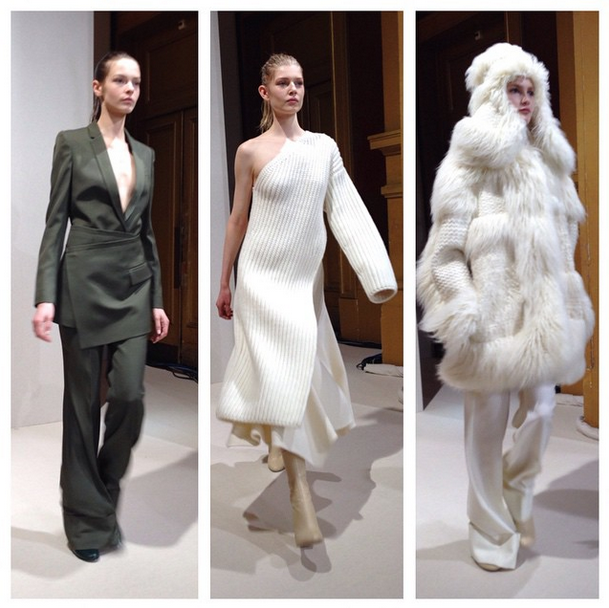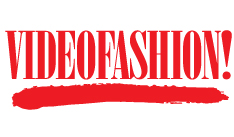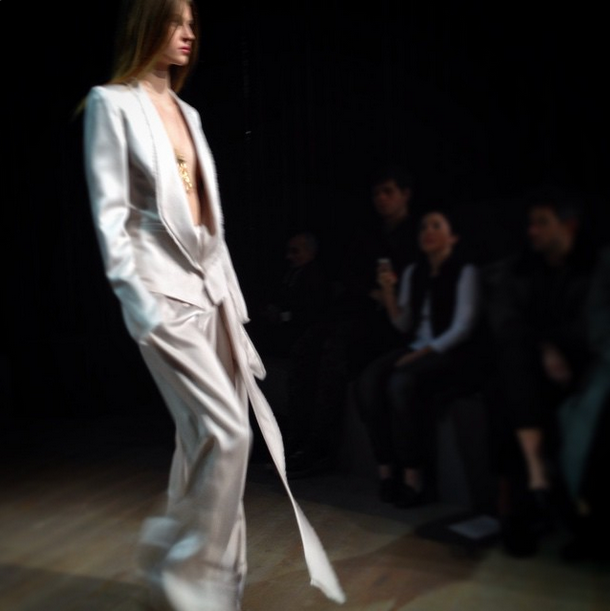Interview with Anne Adami of Videofashion
Jennifer Yao, The New School Libraries’ subject liaison for fashion, interviewed Anne Adami, the creator, managing editor, and president of Videofashion. Videofashion DVDs can be borrowed from the library, and streaming videos are available through the library’s Kanopy database.
In what year did Videofashion start? How did it start?
Videofashion started in 1976, when videotape was a new technology. The first event that we taped was The Coty Awards, organized by Eleanor Lambert, the founder of the CFDA (Council of Fashion Designers of America). My business and lifetime partner is Nicolas Charney, the founder of Psychology Today magazine. Nick was making educational films; back then it was on film and the audio was recorded separately. When video came along, he embraced the new technology, and he wanted to create the first video magazine. Fashion and music were the place to be, and my background was in fashion, so we created the world’s first video magazine on fashion, Videofashion. Our customers were retailers and schools. Most people had never seen a fashion show before. Fashion wasn’t on network TV, cable TV was new, few people owned a videocassette player, let alone a DVD player or Internet connection. We worked with Bloomingdale’s, the King of Prussia Mall in Philadelphia, and Le Forum des Halles in Paris to install video monitors and show our fashion videos to the public.
What is your personal background in fashion?
I was a fashion model for Giorgio Armani, Ralph Lauren, and other designers. Working with Videofashion, I got privileged access to Italian fashion designers since I was fluent in Italian and many of the designers spoke little English. There was very little press around and the designers had very little media training. It was completely new at the time. Now when you go to a fashion show, there are forty video cameras crammed on a riser. Back then, when Nick Charney called Calvin Klein’s office to ask if he could shoot a fashion show in the showroom — fashion shows were in showrooms back then — Calvin asked, “What for?” But very quickly, he adopted video as a tool for fashion merchandising, displaying fashion videos in his stores. To portray a consistent image, fit models that were used in fashion shows were also used in fashion advertising, and this transformed fashion marketing and the fashion industry. I also must credit my friend Elsa Klensch from CNN. I had worked for her when she was at Harper’s Bazaar and when she joined CNN, she established fashion as a subject worthy of coverage on cable television.
What are the various ways people can watch Videofashion? Who are some of your clients besides academic libraries?
Videofashion is now distributed on DVD and also in streaming format through Kanopy and Alexander Street Press. The New School has access to several series through the Kanopy streaming service and DVDs in its library collection, including The Year in Fashion, which highlights the four fashion capitals annually from 1985 to last year. Designer Marathon is our largest series, with 79 videos on fashion designers. Each episode provides a biographical sketch and a timeline of all the most important shows for each designer. Videofashion Collections covers the designer collections shown each season in New York, London, Milan and Paris. Our clients include documentary filmmakers and many international TV channels such as the Arte channel in France and Germany.
What makes Videofashion unique?
We started an industry; we were there in the beginning and we’re still around. We’re the best reflection of 20th century fashion. Of course, there are many places where people can go to get video footage of fashion shows. But we are more comprehensive. At the fashion shows, we go behind-the-scenes, we go backstage, we interview the press, and we interview the designers. We’ve been doing this for a long time, so we know who we need to interview.
We also have an incredible film archive. In the early ‘90s, we sent interns to Washington, DC, to the public film archives. You were allowed to load the reels — they were on ¾ inch cassette — and record them. They didn’t have fashion categorized in the archives. So the interns looked through all the news reels, especially the Movietone News, that used to be played before films in movie theaters between 1929 and 1967, fashion parades, political ladies, and anything else we thought would be of interest. We recorded 30 hours of material and we use a lot of it in our programming. There’s a lot of Dior, films from Pathé from the 1940s. There is black and white footage from when Jackie Kennedy visited the Canadian Mounties, and our producer made sure to shoot footage of the actual red suit on a mannequin when it was shown at the Met exhibit on Jackie Kennedy (Interviewers note: Jacqueline Kennedy: The White House Years, exhibit dates May 1 – July 29, 2001). And we also have her riding on the back of an elephant wearing Oleg Cassini, and I think of Michelle Obama and when she wore Bibhu Mohapatra on her recent visit to India. These images of first ladies and their thoughtful fashion are very important. We would love to go back another century and work on the Library of Congress still photos.
Which series are you most proud of?
The Videofashion Collections series (part of Videofashion News) is the backbone of Videofashion. We’ve been doing it since 1976, we have tons of footage, and it is very comprehensive.
Tell us a little bit about the production of a Videofashion episode. How many people are involved? How long does it take from conception to distribution? Who does your research?
We have 10 to 30 people involved at any time. We produce a lot of content — our producers turn out 2 programs a week. A lot of programming is the fashion shows and interviews, but at the same time, we work on long-range programming that tells more of a story, and for these, it can take anywhere between 2 to 6 months to produce a program. Another thing we do is to attend and interview curators of museum fashion exhibitions — at the Metropolitan Museum of Art, Le Musée de la Mode, the Victoria and Albert Museum. This content gets included on Designer Marathon episodes on designers. We work as a team to produce each program, and we’ve always worked this way.
What do you do with all the raw footage that you’ve shot over the years?
Most of our footage makes it into a program. But my next priority after making all our programming digitized (which will be done by summer), is to do something with the footage that we shot between 1976 to 1986, which is unique in the world.
Do you have a cherished fashion memory?
Spending time with Gianni Versace in Milan, and the time I visited Karl Lagerfeld’s house, I think it was in 1984, in Paris. I think Lagerfeld is one of the most important designers of the 20th to 21st centuries. He has been the most prolific, and he provides an incredible reflection of society. He keeps fashion moving forward with new ideas, new trends, a new eye and new fabrications. He’s a towering talent. He has longevity and has been behind so many lines for so long, and you have to admire him for that. I also enjoyed going to Sumirago to visit the Missoni family. Their factory and home was in the hills, about 45 minutes outside of Milan. It was a family business. We ate lunch with the workers in the knitwear factory, the kids were just growing up, I interviewed the family.
How would you describe your personal style?
I’m definitely a classicist because my body and my face demand classic clothing. I love vintage clothing. It’s so much fun going to a vintage store. In New York, I frequently go to the Housing Works store in New York, which is in my neighborhood. I go vintage shopping in every city I visit, and I love buying things everywhere except Cannes, which has very high-end things. Boy, they have some great Gauthier. It’s funny because I will pull something out of a rack and I will remember it. Unfortunately, I gave away a lot of my Max Mara from the eighties and now it’s back!

What are your favorite fashion magazines, blogs, or Instagram feeds?
I have to tell you that honestly, Style.com has done a fabulous job. As far as print magazines are concerned, Vogue has managed to stay interesting, and I love the visuals. I read Business of Fashion. It’s interesting because they pull the best of fashion articles and interviews from online. It’s really worth reading. Yesterday, the Internet was abuzz with, “What color is this dress?” And Wired magazine explained scientifically how people see the colors differently, which I found fascinating.
Where do you see Videofashion going in the future?
We’re understanding that it all needs to be digitized and that it needs to be out there. Not only that, it needs to be organized. That’s what the Kanopy and Alexander Street Press services do, plus they give you tools to create playlists and share videos with others. With these digital initiatives, we hope that researchers will use Videofashion for generations to come.
Recent Posts
 School of Fashion Newsletter
School of Fashion Newsletter
- SOF Newsletter- April 2021 April 5, 2021
- SOF Newsletter- March 2021 March 3, 2021
- SOF Newsletter- February 2021 February 8, 2021
- SOF Newsletter- December 2020 December 1, 2020
- SOF Newsletter- November 2020 November 2, 2020
- SOF Newsletter- October 2020 October 6, 2020
- 4/1: Fashion News, Events, Opportunities, & More April 1, 2020
- 3/4: Fashion News, Events, Opportunities, & More March 4, 2020
- 2/26: Fashion News, Events, Opportunities, & More February 26, 2020
- 2/19: Fashion News, Events, Opportunities, & More February 19, 2020

